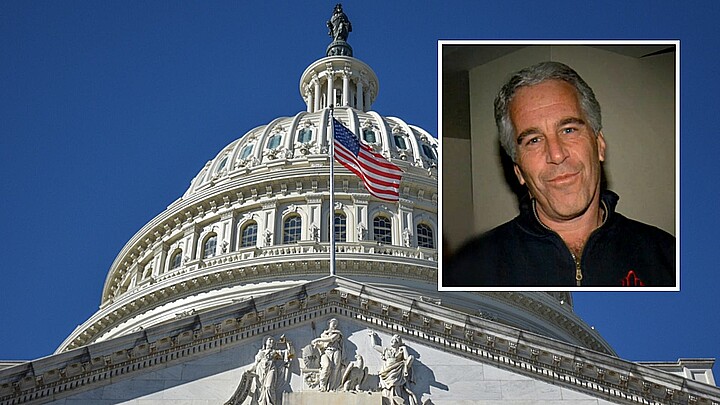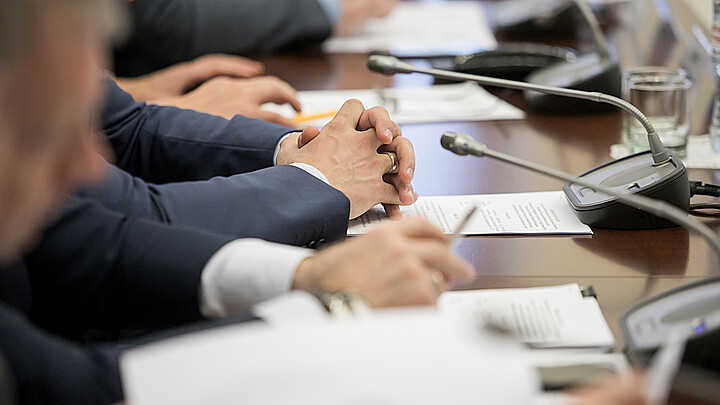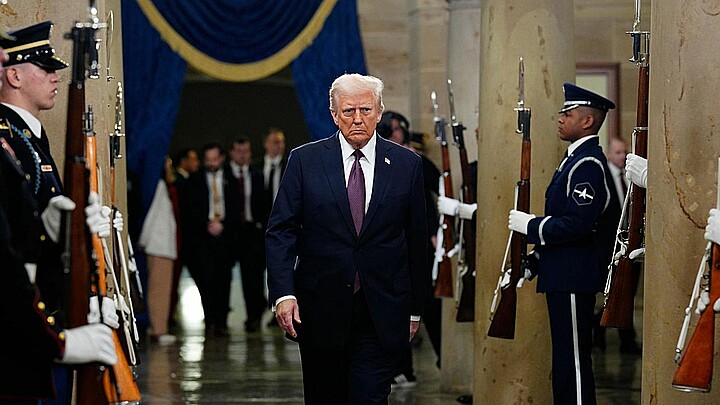Politics
Internal Capitol Police review found sweeping intelligence, security failures on Pelosi's watch
Secret after-action report cited widespread ineptitude and inadequate riot squads, found closing of open-source intelligence unit may have contributed to tragedy.
June 7, 2022 9:13pm
Updated: June 8, 2022 10:51am
Capitol Police compiled a secret after-action review months after the Jan. 6 riots that identified sweeping blunders by the department ranging from delayed deployment of specialized civil disturbance units to the fateful dismantling of an intelligence unit that monitored social media for threats.
Identifying 53 areas of failure needing corrective action, the June 4, 2021 report, obtained by Just the News, produces a far more stark portrait of leadership failures than those offered by Democrat-led investigations, making abundantly clear that the Capitol Police under House Speaker Nancy Pelosi were ill-equipped to defend one of America's most symbolic and high-value institutions two decades after the Sept. 11 attacks.
Specifically, the report stated that some Capitol Police leaders had received intelligence from outside sources like the FBI warning of the strong potential for violence, including the targeting of lawmakers, on the day Congress certified the 2020 election, but those warnings were not properly distilled into the operational plan given to front-line commanders or highlighted in the summary section known as the "Bottom Line Up Front."
"The assessment for 1/6 contained a BLUF that did not express the severity of the threat or the fact that USCP actually had knowledge of a plan in place," according to the report. "The statement that protesters may be armed was included, but it was never expressed with the urgency that they planned to overtake the Capitol and target Members of Congress."
Instead of clear warnings to its forces, Capitol Police leaders put "a generic, all-encompassing quote" in the operational plan that was too vague to convey the true threat level, the report said.
That intelligence failure was exacerbated, the review concluded, when new department leadership installed after Pelosi became Speaker decided to dismantle the department's open-source intelligence unit that scanned for threats on social media.
The lost window into the overt discussion of violence on social media prior to Jan. 6 may have contributed to the tragedy by further blinding commanders and officers to the potential for serious violence, the report.
"Individuals with the most experience extrapolating open-source material were not tasked with reviewing social media to glean intel related to the event," the report stated.
"The social media unit was immediately and essentially dismantled under the new leadership,” it added. "New office reassignments and steering away from the concepts of having subject matter experts may have contributed to the tragedy."
You can read the full report here:
Senate, House and Capitol Police inspector general reports that were released last year during political hearings and guided by the testimony of the department's leadership faulted the department in some areas, including intelligence and preparations.
But the internal after-action report was constructed from observations from 44 different submissions from frontline Capitol Police commanders and officers to its Coordination Unit, providing a specificity of failings and an unvarnished assessment of the senior leadership and its grasp on command and control during the crisis on Jan. 6. The report was not provided to many of those who requested to see it, including Sen. Ron Johnson (R-Wisc.).
It nonetheless validates the claims of some Capitol Police whistleblowers who have approached Congress or whistleblower groups in recent months suggesting Capitol Police leadership had not given lawmakers a full assessment of the department's failures on one of the most violent days in the history of the Capitol, according to a senior law enforcement official directly familiar with the report's creation.
"It provides a very important, and very different perspective from the personnel actually asked to do the job of protecting the Capitol, lawmakers and legislative staff in a moment of crisis," the official said, speaking only on condition of anonymity. "Its findings aren't filtered by leaders or politicians and come directly from the frontlines. They make clear the Capitol was not protected in a proactive way."
Former NYPD Commissioner Bernard Kerik reviewed the report at Just the News' request and said Tuesday night it pointed to failure at the highest level of Capitol security.
The report details "a lack of leadership," he told the "Just the News, Not Noise" TV show. "It's a lack of preparedness. This is an event on this day that they were looking at for a week or two prior. You mean to tell me that nobody, nobody made any preemptive plans on how they were going to deal with any protests, any crowd, any large gathering around the Capitol for their quick reaction force ... That's crazy."
Kerik, who helped former President Donald Trump investigate 2020 election irregularities and was recently interview by the House Jan. 6 committee, said lawmakers showed no interest in investigating the security failures he saw that day. He said the real lessons to be learned won't be complete until Congress has new leadership, possibly after the November elections.
"You know, somebody's got to look at this, and it's gonna be up to the next administration," he said. "The next House is going to have to do that."
The report's emergence comes just days before House Democrats launch nationally televised prime-time hearings on the Jan. 6 tragedy they admit are designed to blame Trump and his advisers for creating an environment conducive to violence.
But the after-action report found there was sweeping blame to be shared by the Capitol Police leadership, citing failures as large as poor communications, staffing, equipment and preparations and as small as doors to Senate areas that did not lock properly and elevators leading to a sensitive floor of the complex that did not get secured during the mayhem.
One of the starkest findings was the failure of Capitol Police executives to deploy their specialized Civil Disturbance Units quickly and effectively.
"CDU squads did not respond in a timely manner," the report concluded. "When the riot broke out, a CDU hard platoon stood by the Senate air shaft for several minutes as officers were on the Lower West Terrace fighting."
A variety of reasons was cited for the slow and uneven deployment of the CDU units, including:
- Equipment was "stored in locations that were difficult to access which led to slower response times," including on a bus that officers did not have the key to unlock.
- Equipment was poorly designed and did not allow effective radio communications by CDU officers, requiring some to remove gas masks to communicate.
- Unit training had been focused on operating in an "urban environment" with "defined barriers" and not on an "open campus" like the sprawling Capitol complex. "Commanders should work on better tactics for the open environment of the Capitol Grounds as opposed to narrow streets in the middle of a major city," the report recommended.
- Leaders did not have adequate planning for an event of such severity. "There were not enough hard platoons deployed for the day," it noted.
- CDU officers had been taken off their regular duty to cover other assignments, leaving an inadequate number to respond to the riot.
- The department did not have adequate numbers of CDU officers training in non-lethal tactics and did not have enough ammunition for such non-lethal encounters.
"The USCP has less than 15 lethal trained officers on the CDU," the report said. "The less than lethal officers tried to hold back the crowd with their ammunitions, but that proved to be ineffective as there was only one small team deployed to dispense less than lethal. The rioters wore goggles, masks, and other makeshift face protection. There was not enough less than lethal equipment deployed and on several occasions officers had to retrieve additional ammunition."
Remarkably, five months after the Capitol riot the CDU leadership had not revised its strategy and plans to address a future event as severe. "Since this event, no CDU officers from other shifts have received plans for future similar events," according to the report. "The Department has continued to staff the same 8-12 hour day shifts without further discussion or training."
The report found that even the basics of physical security — like secure elevators and locked doors — were failures in a Capitol building long feared to be a target of terrorists and violent political extremists.
"Building physical security did not perform as anticipated during the incident," the report noted. "Doors in the chambers did not secure properly. Doors within the Capitol were easily kicked in. Windows were broken by rioters on the first floor to gain access."
Similarly, sensitive offices on the 4th floor of the Capitol were left accessible. "Unauthorized personnel were utilizing the elevator to gain access to the fourth floor in the US Capitol," the report said.










